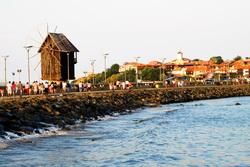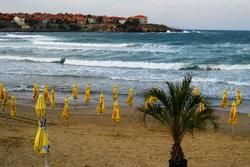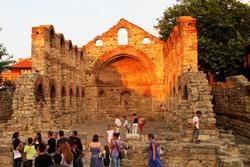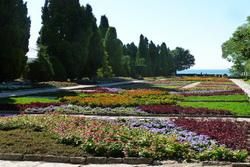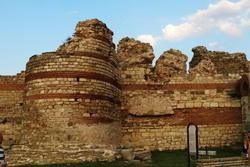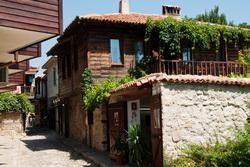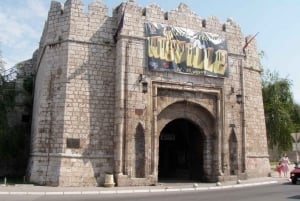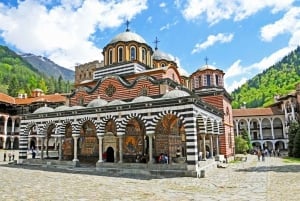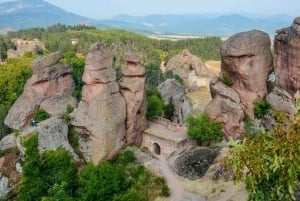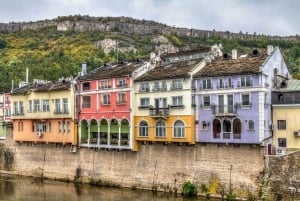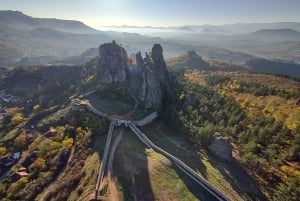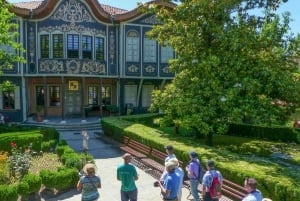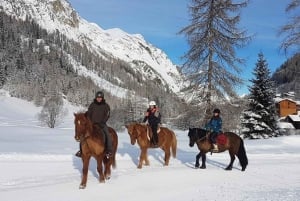Black Sea Coast - the Historical and Cultural Spots
The splendour of the Bulgarian Black Sea Coast has more than one dimension. Apart from the beaches, the clean water, the nice weather and all the sea-related attractions some of the resorts have also managed to preserve a huge chunk of the country’s rich past. Let’s take a stroll through Nesebar and Sozopol.
The town of
Nesebar is located about 30 km north of
Burgas and is one of the most prominent seaside resorts in
Bulgaria. What makes it really special though isn’t the beach or the sea but the Old Town which is situated on a rocky peninsula connected to the mainland by a narrow strip of land. Its nice Wooden Windmill welcomes tourists at the entrance while its cobblestone alleys show them around myriads of Thracian, Ancient Greek, Roman, Byzantine, Medieval Bulgarian and Ottoman landmarks and monuments. And if they are not impressed by all that, the town’s churches ought to do the job. Local people love telling the joke that Nesebar is perhaps the only place on Earth where each citizen has a church of his own. Although this statement may sound a bit over the top it isn’t that far from the truth. The town has a stunning total of 40 churches, the most famous of which are: the 14th century Church of Christ Pantocrator, the 11th century Church of John the Baptist, the 5th century Church of St. Sofia, etc. Nesebar was included in
UNESCO’s world heritage list in 1983.
The evenings in Nesebar are perfect for casual strolls and the taverns and neat little restaurants are great for romantic dinners. They are scattered around the entire Old Town and some of them offer magnificent views of the moonlit sea. And as for the new town… let’s just say that it’s got the whole array of modern-life conveniences, luxurious hotels, entertainment venues and spacious beaches that allows for the pleasant stay of even the most hard-to-please tourists. New Nesebar has almost merged with Ravda, a fast-growing coastal village with many hotels and guest houses.
Sozopol lies in the southern part of the region, some 40 km south of
Burgas. Many people visit it because they are attracted by the discotheques, night clubs and modern hotels of the new town. Still more people go there led by the strong desire to witness the historical beauty of the Old Town. It has a lot to offer, indeed. Historians claim that the first people to settle this area came at the end of the fifth century BC. Since then many different cultures have ruled across these lands, all of them leaving invaluable evidence for their prominence and achievements. The archaeological exhibits displayed at the history museum provide detailed account of the Antiquity period of the town. The fortification wall that runs along the seafront dates back to the Middle Ages and tells the story of the Second Bulgarian State. Most houses in the Old Town are cultural monuments and represent the architectural style characteristic of the Bulgarian Revival Period of the 19th century. Its churches preserve the good Christian traditions but one of them in particular keeps something more than that. The Church of St. Cyril and St. Methodius in Sozopol is the only temple in the world where tourists will be able to see the relics of John the Baptist. The tours around the Old Town usually end in one of the many taverns on the territory of the resort where one can kick back with a glass of wine and taste the best traditional Bulgarian meals.
The town of Balchik up north is yet another pearl in the crown of the Bulgarian seaside that is worth visiting by those who wish to further expand their knowledge on local culture. Its hilly streets offer some of the most impressive panoramic views of the blue sea and all of them lead in one direction – the palace. The Palace of Queen Marie of Romania in Balchik is one of the most visited sights in the entire northern half of the coast. The complex includes several residential buildings, a couple of religious temples and the most beautiful botanical garden in the country.
The special thing about the palace is its truly remarkable style which can simply be defined as an architectural hotchpotch of traditional Christian and Muslim ornaments. It used to symbolise the queen’s strong faith in Baha’I, a Persian religion according to which all mankind should be united spiritually. Although not part of the original design of the palace, the botanical garden built on its territory in 1940 has become an inseparable part of it and is probably its biggest highlight. It stretches out on an area of around 15 acres and is home to nearly 3000 plant species, some of which really exotic.
Photos by: E.Bliznashka, M.Dimitrova


